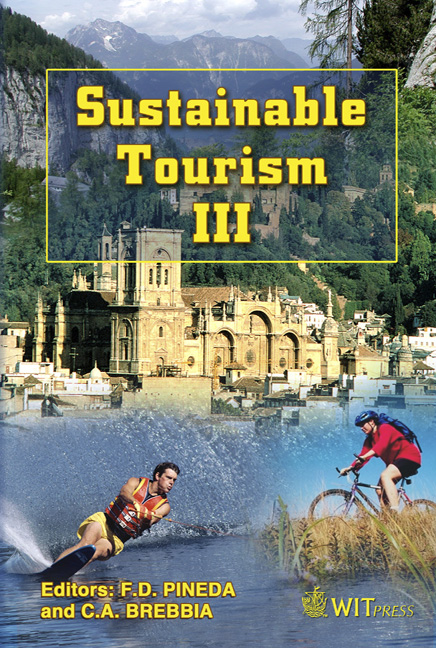Recreation Suitability Analysis: Application In Protected And Non-protected Areas
Price
Free (open access)
Transaction
Volume
115
Pages
8
Published
2008
Size
881 kb
Paper DOI
10.2495/ST080221
Copyright
WIT Press
Author(s)
I. de Aranzabal, M. F. Schmitz, P. Aguilera & F. D. Pineda
Abstract
The influence of tourism in some territories should constitute a priority objective in environmental planning and management. Indeed, this activity tends to occur in areas that are clearly fragile in the socio-ecological sense. Sensible development of tourism involves the correct use of natural resources in protected areas and in many non-protected areas containing particularly sensitive natural and cultural values. Methodological approaches for recreational planning should include an appraisal of the natural, visual and cultural values of the landscape, visitors’ preferences and demands, and an analysis of the relationship between landscape supply and demand. In this paper we apply a model that relates natural values and visitor preferences for suitable management of both protected and non-protected natural areas in the surrounding territories. To this end: i) we characterised the natural and cultural landscapes of eastern Andalucía (Spain), considering characteristics of the territory that are potentially attractive for tourism and ii) we typified the visitors. We analysed the demand for tourism by means of questionnaires filled in by the visitors and which contained aspects relating to their preferences according to the features of the landscape. Thus, we obtained different types of visitors with different attitudes and perceptions in relation to the territory. The model used enabled us to establish the spatial correspondence between the different zones of the territory and demand according to visitors’ preferences. The procedure employed allowed for the design of maps at different scales showing the distribution of preferences and the possible areas to be visited by the different types of tourists and the degree of satisfaction these obtain. This provides a useful reference for the design of a rational management system for tourism in the territory, inside and outside protected natural areas. Keywords: inside-outside protected areas analysis, socio-ecological systems, cultural landscapes, visitor perceptions, cross-boundary management, naturebased tourism, visitor-landscape interaction model, nature reserve network.
Keywords
inside-outside protected areas analysis, socio-ecological systems, cultural landscapes, visitor perceptions, cross-boundary management, naturebased tourism, visitor-landscape interaction model, nature reserve network.





